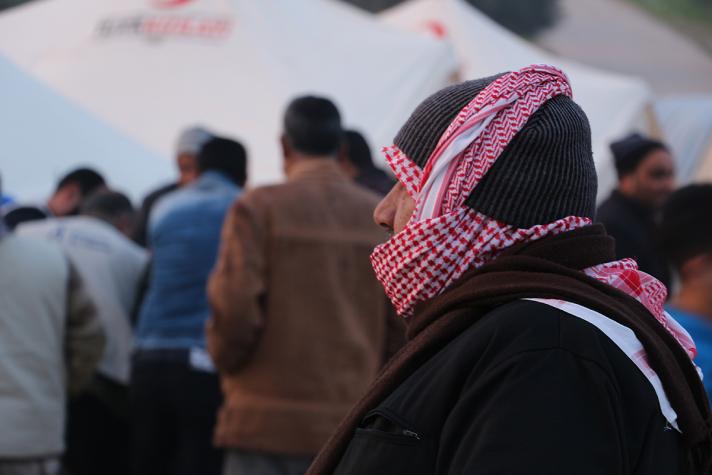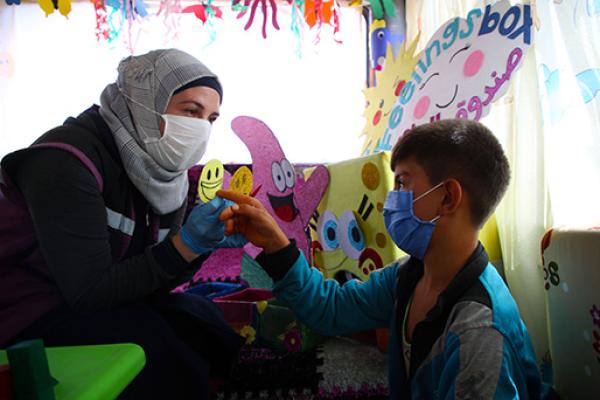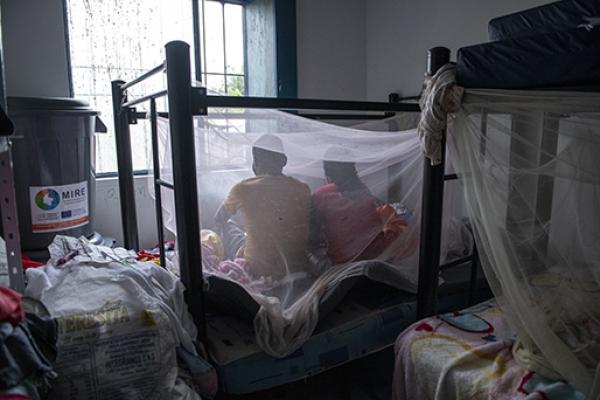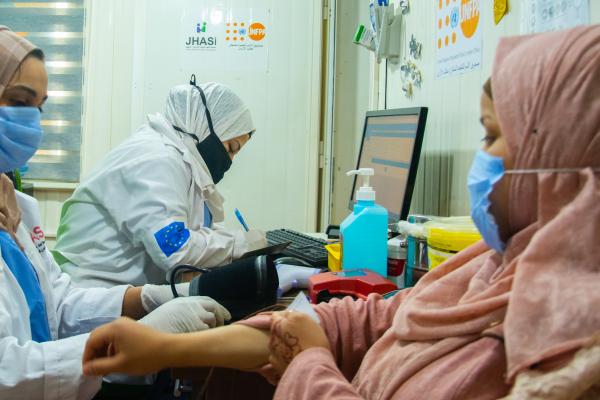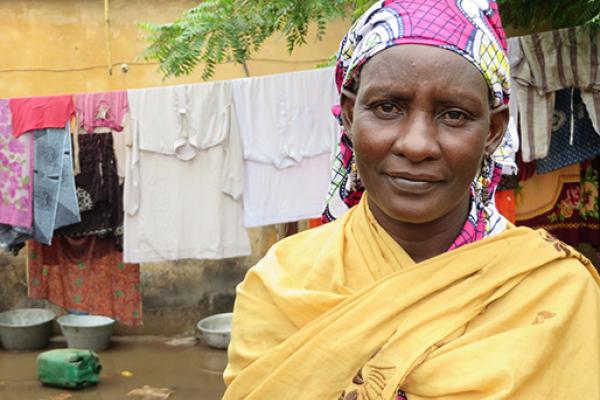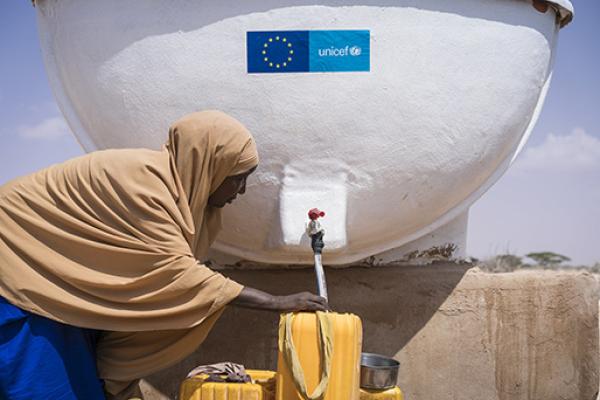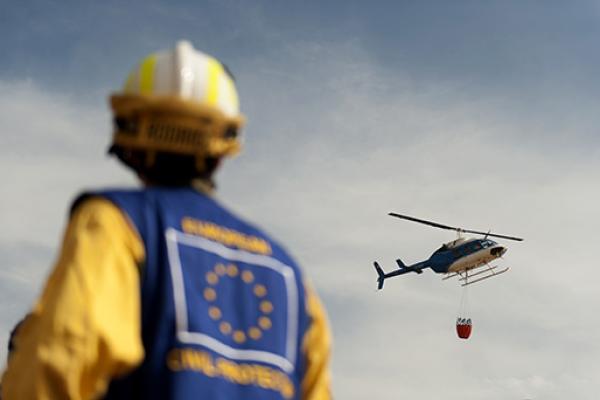Conflict, crisis, COVID-19, cholera, and, as if things couldn’t possibly get worse, the strongest earthquake in a lifetime – there seems to be no end to the suffering of people in northern Syria.
In this region fractured by 12 years of war, people on both sides of the divide have seen their lives once again devastated and hopes crushed. The EU is by their side, providing impartial humanitarian assistance to Syrians through trusted partners.
“It felt like doomsday. At first, we thought it was an airstrike. Although we lived in a tent, we were very scared. We never experienced such a thing before,” says Ahmed.
He is in the non-government controlled part of Aleppo governorate, in northwest Syria, where he and other 2.7 million others still live uprooted by conflict.
“The day after the earthquake, we left the camp because of flooding. The dam was damaged; it cracked. In the past 12 years, this displacement has been the hardest,” he explains.
In the last non-government controlled stretch of Syria bordering Türkiye, humanitarian organisations have already struggled to deliver aid in non-disaster times.
In an area where conflict has been ongoing for years, UN agencies have relied on just 1 border crossing to bring in aid. Due to the earthquake, this exact crossing was closed for days due to damaged roads and major disruptions.
Keep politics out
In a complex and already hard-to-access region, it was clear that reaching the earthquake’s affected areas would be extremely hard. Nevertheless, many EU humanitarian partners already on the ground scrambled nonetheless to start an emergency response.
Because we are used to repeating crises in Syria, our partners can easily redirect funds to respond to emergencies; that is exactly what many did immediately after the quake,” says Luigi Pandolfi, head of EU Humanitarian Aid Operations in Syria.
“They provided tents, blankets, hygiene and cooking items to those who lost their homes and supplied health facilities with medicines. But supplies were running low, the needs were, and are, still immense,” he explains.
The EU provides humanitarian aid to Syrians through non-governmental organisations, UN agencies and the Red Cross and Red Crescent movement across the country.
Our partners keep politics out of aid. Therefore, they opt to keep a low profile and work discreetly, with the help of local organisations that do not carry big signs or donor logos that could endanger the workers’ lives or aid operations.
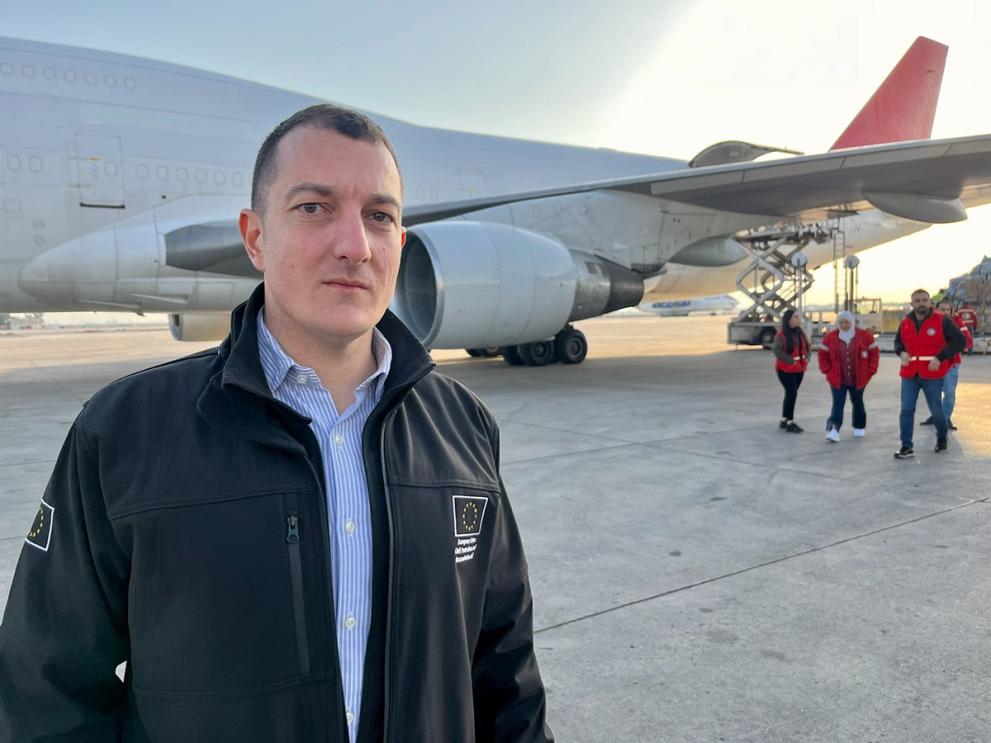
The other side
Suffering doesn’t stop at borders or frontlines. On the other side of the divide, not far from where Ahmed lives, lies Aleppo.
A skyscape as scarred as its population by years of siege and ferocious shelling that lay ruin to half the city. The earthquakes brought new devastation to both intact and already damaged buildings.
Some 10% of the 2 million inhabitants took refuge in more than 200 mosques and schools. In these collective shelters, with several families in a room, many are waiting for their building to be declared safe to return home.
Others, like 66-year-old Sanaa, have no option but to stay since her apartment is now uninhabitable. She guides us outside the boisterous school corridors to meet her 73-year-old husband, Samir.
“There are 12 families in ‘our’ classroom, so we sleep in the car,” Sanaa says, standing in front of a small truck covered with plastic sheeting.
“We’ve had to leave our home 3 times in the past 12 years. We are respectable people. We don’t want to be beggars but have nowhere to go,” she says, no longer holding back tears.
“We need food. Our clothes are torn. We only have a few things, and they are all gone,” Sanaa.
When Samir retired in 2010, they never imagined they would have to survive the war, bombardments, poverty, and an earthquake. His monthly retirement pension is the equivalent of €13 in today’s struggling economy, and the vehicle is their last possession.
EU humanitarian partners are helping people in the shelters with health care, counselling, hygiene, and other essential aid.
However, the situation in the shelter isn’t sustainable. It is overcrowded and lacks of proper sanitation, making disease outbreaks more likely with every passing day.
Before the earthquake, humanitarian needs were already at an all-time high in Syria. With crisis after crisis shaking people to their core, pushing them to the edge of survival, donor fatigue is not an option.
In addition to EU humanitarian aid, the EU Civil Protection Mechanism was activated 2 days after the quake. Via Türkiye and Lebanon, 16 European countries provided aid to opposition-held and government-controlled areas. The EU also sent relief from its humanitarian stockpiles to both sides.
As one of the major donors for aid to Syrians, the EU has maintained a stable level of humanitarian funding in recent years. Despite many challenges, the EU has been providing impartial humanitarian aid to people in Syria since 2011, on all sides of the conflict.
Story by Anouk Delafortrie, Regional Information Officer for Middle East and Nothern Africa, EU Civil Protection and Humanitarian Aid Operations.
Publication date: 15/03/2023

